- Home
- Computer Systems
- Gaming Laptop
- Gaming Laptops
Gaming Laptops
- In Stock
- Sold by Newegg
- AI Ready
- Make an Offer
- New
- Brands
- Show More
- GPU/VPU
- Show More
- CPU Type
- Show More
- Screen Size
- Show More
- Memory
- SSD
- Show More
- HDD
- Virtual Reality Ready
- Operating System
- Touchscreen
- Processor Name
- Show More
- Number of Cores
- Show More
- Optical Drive Type
- Series
- Show More
- Backlit Keyboard
- HDMI
- Video Port
- Show More
- Thunderbolt
- Show More
- Ethernet
- Resolution
- Show More
- Panel
- WiFi Generation
- Webcam
- Wide Screen Support
- Bluetooth
- Show More
- Usage
- Show More
- WLAN
- Type
- Show More
- Battery
- Show More
- Style
- Weight
- Show More
- Video Memory
- Show More
- Refresh Rate
- Show More
- Memory Slot (Available)
- USB
- Show More
- All Top Brands
- Availability
- Condition
- Price
- Show More
- Current Promotion
- Discount
- Sold by
- Useful Links
- New
Show More
- Customer Ratings
- & up
SHOP BY "GPU/VPU"

- GPU/VPU: GeForce RTX 5070 Ti Laptop GPU
- Memory: 32GB
- SSD: 1 TB
- HDD: 1TB
- Model #: GA403WR-G14.R95070TI
- $2,396.99 –
- Free Shipping
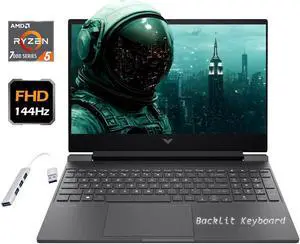
- GPU/VPU: AMD Radeon RX 6550M
- Processor Name: 3.40GHz
- Memory: 32GB
- SSD: 2 TB
- Model #: HC320022110324SUB
- $849.00 –
- More options from $799.00 - $849.00
- Free Shipping
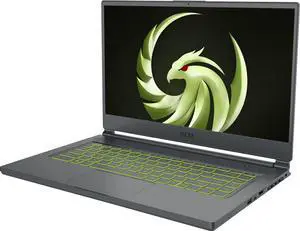
- GPU/VPU: AMD Radeon RX 6700M
- CPU Type: AMD Ryzen 7 5000 Series
- Screen Size: 15.6"
- Model #: Delta15001
- $1,220.99 –
- Free Shipping
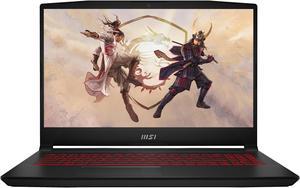
- GPU/VPU: GeForce RTX 3060 Laptop GPU
- Processor Name: Intel Core i7-11800H
- Memory: 16GB
- SSD: 512 GB NVMe
- Model #: Katana GF66 11UE-617
- $1,082.99 –
- Free Shipping

- GPU/VPU: GeForce RTX 5080 Laptop GPU
- Memory: 32GB
- SSD: 1 TB
- Brand: Lenovo
- Model #: 83F50012US
- $2,998.00 –
- Free Shipping

- GPU/VPU: Intel UHD Graphics
- Processor Name: 1.70GHz
- Memory: 16GB
- Series: ?Latitude 3000
- Model #: B2C_Dell -3520_8-15-23_16_512P_2
- $799.99 –
- Free Shipping

- GPU/VPU: Intel UHD Graphics
- Processor Name: 1.70GHz
- Memory: 16GB
- Series: ?Latitude 3000
- Model #: B2C_Dell -3520_8-15-23_16_1TP_2
- $1,038.77
- $869.00 –
- Save: 16%
- Free Shipping
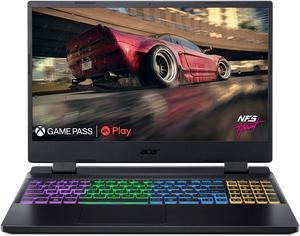
- GPU/VPU: GeForce RTX 3070 Ti Laptop GPU
- Processor Name: AMD Ryzen 7 6800H
- Memory: 16GB
- SSD: 1 TB PCIe
- Model #: NH.QH1AA.005
- $1,089.99 –
- More options from $1,089.99 - $1,096.00
- Free Shipping
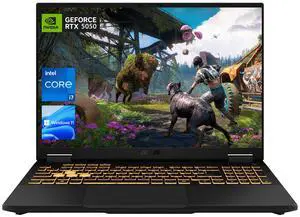
- GPU/VPU: NVIDIA GeForce GTX 5050
- Memory: 32GB
- SSD: 1 TB PCIe
- Operating System: Windows 11 Home
- Model #: TUFF169089-B_CTO_N2
- $1,809.00
- $1,299.00 –
- Save: 28%
- Free Shipping

- GPU/VPU: GeForce GTX 1660 Ti
- Processor Name: Intel Core i5-9300H
- Memory: 8GB
- SSD: 512 GB NVMe
- Model #: GF65 THIN 9SD-008
- $1,140.99 –
- Free Shipping
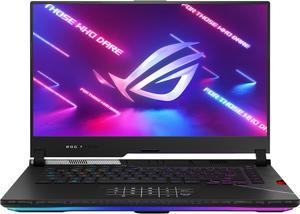
- GPU/VPU: GeForce RTX 3060 Laptop GPU
- Processor Name: Intel Core i9-12900H
- Memory: 16GB
- SSD: 512 GB PCIe
- Model #: G533ZM-ES93
- $1,795.99 –
- More options from $1,199.00 - $1,795.99
- Free Shipping

- GPU/VPU: GeForce RTX 5080
- Memory: 32GB
- SSD: 2 TB
- Operating System: Windows 11 Pro
- Model #: ME-242875331226
- $3,581.24 –

- GPU/VPU: GeForce RTX 4050 Laptop GPU
- Processor Name: 3.20GHz
- Memory: 12GB
- SSD: 512 GB
- Model #: 83JC00GKUS
- $699.99 –
- More options from $699.99 - $997.99
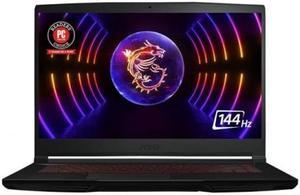
- GPU/VPU: GeForce RTX 2050
- Processor Name: Intel Core i5-12450H
- Memory: 8GB
- SSD: 512 GB PCIe
- Model #: THINGF6312814
- $599.00 –
- More options from $599.00 - $899.95
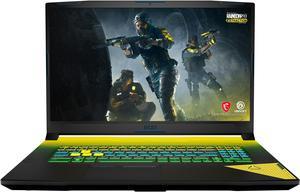
- GPU/VPU: GeForce RTX 3070 Laptop GPU
- Processor Name: Intel Core i7-12700H
- Memory: 16GB
- SSD: 512 GB PCIe
- Model #: CH 17 B12UGZ-295
- $2,107.99 –
- Free Shipping
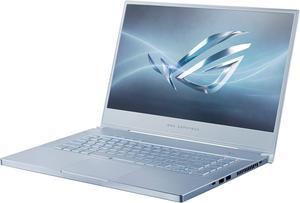
- GPU/VPU: GeForce GTX 1660 Ti
- Processor Name: Intel Core i7-9750H
- Memory: 16GB
- SSD: 512 GB
- Model #: GU502GU-XH74-BL
- $1,232.99 –
- Free Shipping
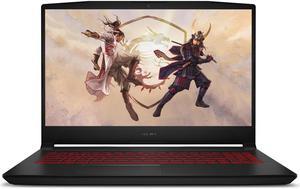
- GPU/VPU: GeForce RTX 3050 Laptop GPU
- Processor Name: 2.70GHz
- SSD: 512 GB
- Operating System: Windows 10 Home
- Model #: KATANA GF66 11UC-453
- $1,310.99 –
- Free Shipping

- GPU/VPU: GeForce RTX 3080 Laptop GPU
- Processor Name: Intel Core i7-11800H
- Memory: 16GB
- SSD: 512 GB NVMe
- Model #: GP66Leopard11UH-444
- $2,640.99 –
- Free Shipping

- GPU/VPU: GeForce RTX 3060 Laptop GPU
- Processor Name: AMD Ryzen 7 6800H
- Memory: 16GB
- SSD: 512 GB PCIe
- Model #: FA707RM-ES73
- $1,795.00 –
- Free Shipping

- GPU/VPU: AMD Radeon RX 6700M
- Processor Name: AMD Ryzen 7 5800H
- Memory: 16GB
- SSD: 1 TB PCIe
- Model #: Delta 15 A5EFK-097
- $919.99 –
- More options from $919.99 - $1,474.93
- Free Shipping
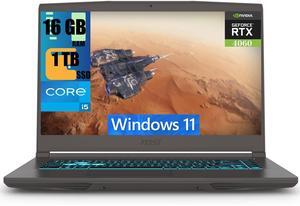
- GPU/VPU: GeForce RTX 4060 Laptop GPU
- Memory: 16GB
- SSD: 1TB PCIe SSD
- Operating System: Windows 11 Home
- Model #: Thin 1552913420H4060-020
- $979.00 –
- More options from $979.00 - $1,349.00
- Free Shipping
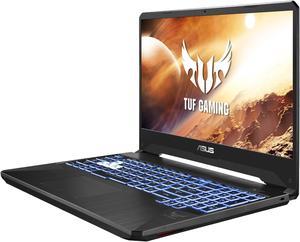
- GPU/VPU: GeForce RTX 2060
- Processor Name: AMD Ryzen 7 3750H
- Memory: 16GB
- SSD: 512 GB PCIe
- Model #: FX505DV-PB74
- $964.99 –
- Free Shipping

- GPU/VPU: GeForce RTX 3050 Laptop GPU
- Processor Name: Intel Core i5-10300H
- Memory: 32GB
- SSD: 2 TB
- Model #: Nit53050i51-322nP
- $1,289.99 –
- Free Shipping
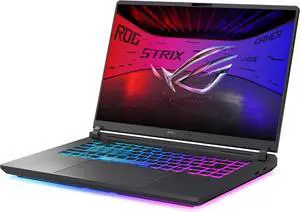
- GPU/VPU: GeForce RTX 5060 Laptop GPU
- Memory: 16GB
- SSD: 1 TB
- Operating System: Windows 11 Home
- Model #: G615JMR-AS74
- $1,499.99 –
- More options from $1,470.85 - $1,579.00
- Free Shipping

- GPU/VPU: GeForce RTX 2060
- Processor Name: AMD Ryzen 9 4900HS
- Memory: 24GB
- SSD: 1 TB PCIe
- Model #: GA401IV-BR9N6-DK12
- $1,949.99 –
- More options from $1,949.99 - $2,049.99
- Free Shipping
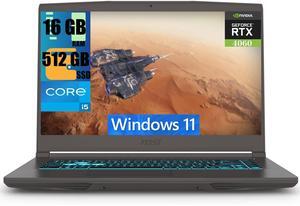
- GPU/VPU: GeForce RTX 4060 Laptop GPU
- Memory: 16GB
- SSD: 512GB PCIe SSD
- Operating System: Windows 11 Home
- Model #: Thin 1552913420H4060-019
- $929.00 –
- More options from $925.00 - $1,289.00
- Free Shipping
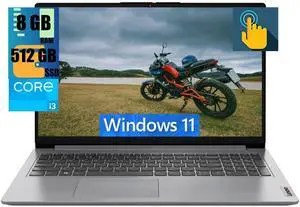
- GPU/VPU: Intel UHD Graphics
- Processor Name: 1.20GHz
- Memory: 8GB
- SSD: 512GB PCIe
- Model #: Ideapad 1i 15225i31215U-001
- $439.79 –
- More options from $439.79 - $489.00
- Free Shipping

- GPU/VPU: GeForce RTX 3060 Laptop GPU
- Processor Name: Intel Core i7-11800H
- Memory: 16GB
- SSD: 1 TB PCIe
- Model #: TUF506HM-ES76
- $2,295.99 –
- More options from $1,580.23 - $2,295.99
- Free Shipping
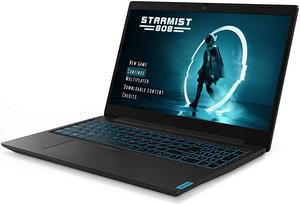
- GPU/VPU: GeForce GTX 1650
- Processor Name: 2.40GHz
- Memory: 8GB
- SSD: 512 GB
- Model #: 81LK00HDUS
- $1,140.99 –
- Free Shipping

- GPU/VPU: GeForce RTX 4050 Laptop GPU
- Processor Name: AMD Ryzen 7 7445HS
- Memory: 16GB
- SSD: 512 GB
- Model #: 15-fb3093dx
- $759.99 –
- More options from $739.99 - $819.99
- Free Shipping
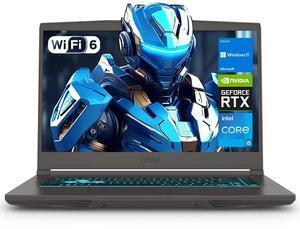
- GPU/VPU: NVIDIA GeForce RTX 4060
- Memory: 32GB
- SSD: 1 TB PCIe
- Operating System: Windows 11 Home
- Model #: THIN154977-C_CTO_N1
- $1,217.85 –
- More options from $999.00 - $1,217.85
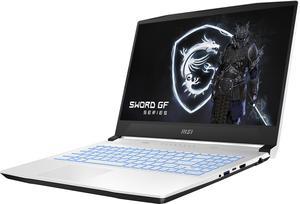
- GPU/VPU: GeForce RTX 3050 Laptop GPU
- Processor Name: Intel Core i5-12450H
- Memory: 8GB
- SSD: 512 GB PCIe
- Model #: Sword1512295
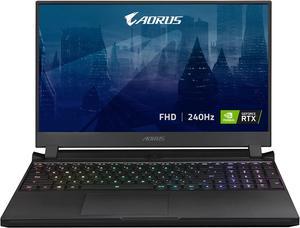
- GPU/VPU: GeForce RTX 3070 Laptop GPU
- Processor Name: Intel Core i7-11800H
- Memory: 16GB
- SSD: 1 TB PCIe
- Model #: 15P XD-73US324SH
- $2,059.99
- $2,059.00 –
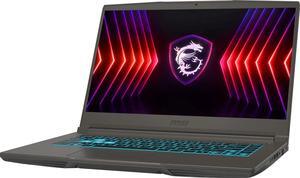
- GPU/VPU: GeForce RTX 4050 Laptop GPU
- Processor Name: Intel Core i5-13420H
- CPU Type: Intel Core i5 13th Gen
- Screen Size: 15.6"
- Model #: THIN15131451
- $824.00 –
- More options from $824.00 - $1,249.00
- Free Shipping
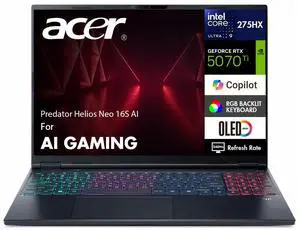
- GPU/VPU: GeForce RTX 5070 Ti
- Memory: 64GB
- SSD: 2 TB
- Operating System: Windows 11 Pro
- Model #: ME-247220257427
- $3,084.89
- $2,756.24 –
- Save: 10%
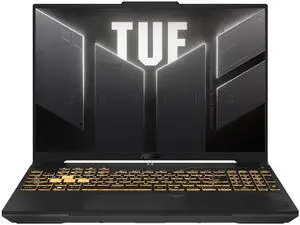
- SSD: SSD
- HDD: SSD
- Operating System: Windows 11 Home
- WiFi Generation: 802_11_AX
- Model #: FX607VU-SS53
- $998.00 –
- Free Shipping
Buying a Gaming Laptops
How to Choose the Right Gaming Laptop
Picking the perfect gaming laptop doesn't have to feel like solving a puzzle. Whether you're chasing 240 FPS in competitive shooters or want buttery 4K visuals in single-player epics, we'll break down exactly what matters in your next gaming powerhouse. Learn more in our full Insider guide: How to Choose the Best Gaming Laptop – 2025 .
Gaming Laptop vs. DIY Desktop: Why Portability Wins
The DIY Route (Custom-Built)
- Total control - Handpick every component from the RGB-lit case to the whisper-quiet cooling
- Cost efficiency - Save 15-30% by avoiding prebuilt markup (when sales align)
- Learning experience - Nothing beats the pride of your first successful build
- Risk factor - One wrong connector can lead to troubleshooting headaches
The Plug-and-Play Option (Prebuilt)
- Zero assembly - Unbox, plug in, and game immediately
- Portable performance - Compete or create anywhere, without lugging a full tower.
- No-compromise visuals - RTX 50 series GPUs and high-refresh-rate displays are now standard in premium laptops.
- Upgrade limitations - Some use proprietary parts that limit future swaps
What Really Matters in a Gaming Laptop
- GPU - Your Gaming Lifeline
This is where frames are born—your GPU is the most critical component for gaming. Match your power to your resolution: 1080p @ 144Hz – GeForce RTX 4060 Laptop /AMD RX 7600S ; 1440p or ray tracing – RTX 5080 / RTX 4080 Laptop; 4K Ultra – RTX 5090 / RTX 4090 Laptop or higher.
- CPU - The Game's Conductor
Intel Core Ultra 9 and AMD Ryzen AI 300 Series are currently hot picks. For streamers and heavy multitaskers, the Intel Core i9 or AMD Ryzen 9 offers the extra power needed for smooth performance.. See all CPU options.
- RAM - Your Multitasking Muscle
16GB is the bare minimum. 32GB DDR5 (5600MHz+) future-proofs your rig for upcoming titles like GTA VI. Chrome tab addicts? 64GB exists for a reason. You can search for laptops with varying amounts of Laptop Memory on Newegg
- Storage - Speed Meets Capacity
1TB Gen4 NVMe SSD for your OS and favorite games + 2TB HDD for your meme collection. Pro tip: Some GPU bundles include free SSDs.
Gaming's Best Supporting Actors
Must-Have Peripherals
- Gaming Monitor - Your GPU's hard work deserves to be seen
- Gaming Keyboard - That satisfying click-clack translates to faster reactions
- Quality headset - Hear footsteps before they hear you
Newegg's Game-Changing Tools
laptop Finder: Our laptop finder help to find the perfect laptop for your needs. Learn how to choose a laptop based on your top needs, features, and budget. Our vast database allows you to narrow down, filter, and identify the best laptop for you. Finding your next laptop has never been this easy.
Deal Alerts: For the latest deals and a wide selection of high-performance gaming laptops on sale shop Newegg shop Newegg, a trusted source for all your gaming needs.
2025 Black Friday Gaming Laptop Deals Get ready for the biggest laptop savings of the year! — featuring deep discounts on top-rated RTX and AI-powered gaming laptops. Upgrade to the latest ASUS ROG, MSI Stealth, and Lenovo Legion notebooks with RTX 5090 / 5080 / 5070 Ti GPUs and Intel Core Ultra or Ryzen AI processors for the ultimate gaming performance. Don’t wait until Black Friday — these limited-time early deals bring exclusive upgrade offers and the lowest prices of the season on next-gen gaming laptops built for serious players.
Editor’s Picks: Recommended Gaming Laptops
18" WQXGA display, Ryzen 7 AI 260 CPU, and RTX 5070 GPU—perfect for serious gamers and creators.
ASUS TUF Gaming A18 – RTX 5070, Ryzen 7 AI 260, 18" WQXGA, 16GB DDR5, 1TB PCIe SSDBalanced specs for mainstream gamers—RTX 5060, Ryzen 7 AI, and sleek 16" design make it a great on-the-go choice.
ASUS TUF Gaming A16 – RTX 5060, Ryzen 7 AI 260, 16" FHD, 16GB DDR5, 512GB NVMe SSDGaming Laptop Frequently Asked Questions:
ROG Strix vs. Legion Pro 5i — which is better for gaming?
Both are excellent gaming laptops , but they lean into different strengths. ROG Strix models usually push more aggressive GPU power limits and RGB styling, while Legion Pro 5i systems focus on balanced thermals, quieter fans, and a cleaner design. If you want maximum tuning and flair, Strix fits better; if you prefer a cooler, more understated daily driver, Legion Pro 5i is a great choice.
RTX 5090 laptops vs. RX 9000 — which provides better value?
RTX 5090 laptops typically win on features like DLSS, Frame Generation, and stronger ray tracing performance, while RX 9000 machines can offer similar traditional raster performance at a lower price. If you care about upscaling tech and creator app support, the RTX 5090 is usually better; if your priority is a lower-cost 1080p or 1440p gaming machine, RX 7700S can deliver excellent value.
How does this laptop perform against Razer Blade models?
Compared to Razer Blade laptops, this system often trades a slimmer, all-metal premium chassis for stronger cooling headroom and better performance-per-dollar. Blades are known for their ultra-thin builds and minimalist design, while many competitors give you higher GPU power limits, more RAM, or more storage at the same budget. If you want maximum luxury and portability, a Blade appeals; if you want more raw performance for your money, this model may come out ahead.
Which delivers better thermal performance in esports titles?
Thermal performance in esports titles depends on the cooling design more than the game itself. Laptops with dual-fan, multi-heatpipe systems and good intake and exhaust vents will generally run cooler and sustain higher boost clocks. When comparing models, look for reviews or tests that show sustained CPU and GPU temperatures in games like Valorant, CS2, or League of Legends to see which one stays cooler under load.
Does this model outperform previous-year Legion laptops?
Most current-generation models outperform previous-year Legion laptops thanks to newer CPUs, more efficient GPUs, and faster memory. You can usually expect higher frame rates at the same settings, better ray tracing performance, and improved battery efficiency. For a clear comparison, check side-by-side benchmarks in the games and resolution you actually play.
Does this model support DLSS 4 for better gaming performance?
If the laptop uses a NVIDIA RTX 40-series or 50-series GPU, it is designed to support DLSS in compatible titles, with newer GPUs ready for DLSS 3 or 4 features. DLSS can dramatically boost frame rates while keeping image quality sharp, especially at higher resolutions or with ray tracing enabled. Always confirm the exact GPU model and check the game’s support list to make sure DLSS 4 is available for your favorite titles.
What is the TGP (Total Graphics Power) of the GPU in this laptop?
The exact TGP for this laptop’s GPU depends on the specific configuration and manufacturer tuning. You can usually find it listed in detailed product specifications, on the OEM website, or in third-party reviews and teardowns. As a rule, higher TGP settings let the GPU sustain higher boost clocks, but they also require stronger cooling and tend to produce more heat and fan noise.
What is the sustained GPU wattage during long gaming sessions?
During long gaming sessions, the GPU usually settles near its configured TGP, adjusted by temperature and power limits. In a well-cooled laptop, sustained wattage will remain close to that advertised value instead of dropping significantly over time. You can monitor actual GPU power draw with utilities like MSI Afterburner, GPU-Z, or the manufacturer’s performance software while you play.
Does this laptop include MUX switch support?
Many modern gaming laptops now include a MUX switch or a dedicated “dGPU only” mode that routes the display directly to the discrete GPU for extra performance. This can improve frame rates and reduce latency compared to always using hybrid graphics. Check the product page or the laptop’s control center software for options labeled MUX, GPU switch, Ultimate mode, or similar terms.
Does the display support G-SYNC or FreeSync?
Adaptive sync support depends on the exact panel and GPU pairing used in this laptop. Many gaming notebooks now offer G-SYNC, FreeSync , or a generic Adaptive-Sync mode to reduce tearing and stutter in fast-paced games. Look for these terms in the display specifications, and be sure to enable the feature in your graphics control panel if it is available.
Should I buy a gaming laptop or a desktop gaming PC?
Buy a gaming laptop if you need portability for school, travel, or shared spaces and still want strong performance in modern titles. Choose a desktop gaming PC if you care more about maximum power, easier upgrades, and better thermals at the same budget. In general, desktops win on performance-per-dollar, while laptops win on flexibility and convenience.
What’s the best gaming laptop under $1,500?
The best gaming laptop under $1,500 usually includes a modern 6–8 core CPU, an RTX 4060 or similar GPU, 16GB of RAM, and a 144Hz or faster display. Focus on a balanced configuration with a quality panel, solid cooling, and at least a 512GB SSD instead of chasing just one headline spec. Comparing a few trusted brands and reading recent reviews will help you spot the strongest all-around option in this price range.
Is this a good laptop for both gaming and school?
Yes, as long as it has a modern CPU, 16GB of RAM, and a manageable weight, it can handle both gaming and school work comfortably. You can run office apps, video calls, and research tools during the day, then switch to high-refresh gaming after hours. Just pay attention to battery life and portability if you plan to carry it around campus every day.
Should I choose a 240Hz display or 165Hz for gaming?
A 165Hz display already feels extremely smooth and is more than enough for most players, especially in AAA games where frame rates rarely hit 240 FPS. A 240Hz panel mainly benefits competitive esports players who chase every millisecond in titles like Valorant, CS2, or Fortnite. If you are not a hardcore competitive player, panel quality, color, and brightness often matter more than the jump from 165Hz to 240Hz.
Is 16GB RAM enough for modern gaming laptops?
Yes, 16GB RAM is still the practical minimum for modern gaming and general multitasking in 2025. However, 32GB is ideal if you stream, edit video, run many browser tabs, or want extra headroom for future titles. If the laptop supports upgrades, starting with 16GB and adding another stick later is a flexible path.
Are there keyboard input delay issues in this laptop?
Most modern gaming laptops offer low-latency keyboards that are responsive enough for fast-paced games. If input delay is noticed, it is more often due to background software load, high system usage, or wireless peripherals than the built-in keyboard itself. Checking reviews or user feedback for this exact model is the best way to confirm that there are no widespread complaints about input lag.
Is the screen bright enough for outdoor use?
For outdoor or very bright environments, a laptop display ideally needs to reach around 400 nits or more to remain clearly visible. Many gaming laptops sit closer to 300 nits, which is fine indoors but can look washed out in direct sunlight. Reviewing the rated brightness and user feedback will tell you whether this model is comfortable to use outside or better suited to indoor gaming.
Do users report thermal throttling under heavy gaming?
Reports of thermal throttling vary by model and configuration, but well-designed gaming laptops should maintain stable clocks in long play sessions. When throttling does appear, it is usually in extreme stress tests or maxed-out settings in very demanding titles. Reading recent reviews and user comments for this specific laptop will give you the clearest picture of real-world behavior under heavy gaming loads.
Are there trackpad sensitivity complaints?
Trackpad quality on gaming laptops has improved, and most models now offer accurate tracking for everyday use. When sensitivity issues do show up, they are often fixed with driver updates or by adjusting touchpad settings in Windows. For serious gaming, a dedicated mouse is still recommended, but you should not see major problems with normal navigation on a well-tuned trackpad.
Is the battery life significantly lower than advertised?
Gaming battery life is almost always much shorter than the advertised figures, which are based on light tasks like video playback or web browsing. Under real gaming loads, it is normal to see the battery drain quickly and performance reduced to manage heat and power. For the best gaming experience, plan to play while plugged in and treat the advertised battery life as guidance for light use, not full-performance gaming sessions.
How do I adjust performance modes for gaming?
Most gaming laptop include a vendor control center where you can switch between Silent, Balanced, and Performance or Turbo modes. Open that software, select the highest performance profile, and make sure the laptop is plugged in so the CPU and GPU can run at full power. You should also set Windows power mode to “Best performance” while gaming for the most consistent frame rates.
Can I install a second SSD in this laptop?
Whether you can install a second SSD depends on the internal layout and available storage slots. Many gaming laptops include at least two M.2 slots, so you can add a second NVMe drive easily, but some thinner models only have one. Check the specifications or service manual for mentions of multiple M.2 slots or 2.5-inch bays before buying an extra drive.
How do I enable high-performance mode for gaming?
To enable high-performance mode, start by plugging in the laptop and setting Windows to “Best performance” in the power settings. Then open the manufacturer’s control center and select the Performance or Turbo preset, which raises power limits and fan curves for gaming. Some models also include a dedicated hotkey or Fn shortcut to switch profiles on the fly.
How do I undervolt to reduce heat?
Undervolting involves slightly lowering CPU voltage using tools like Intel XTU, AMD Ryzen Master, or advanced BIOS options so the processor runs cooler at similar clocks. It must be done carefully and in small steps, with stress tests after each change to ensure stability. If you are new to undervolting, follow a trusted guide for your specific CPU and only proceed if you are comfortable adjusting low-level settings.
How do I update GPU firmware on gaming laptops?
GPU firmware updates are less common than driver updates and are usually provided directly by the laptop maker or GPU vendor for specific fixes. You should only install firmware labeled for your exact model, following the instructions on the support page. For everyday gaming, keeping your graphics drivers and system BIOS up to date is usually sufficient without touching GPU firmware at all.
Bestselling Gaming Laptops Reviews:
“ If you want a laptop thats fast, durable, and hits a sweet spot in price vs. performance, the TUF Gaming A16 is easy to recommend for gamers, students, or creators. ”
ASUS TUF Gaming A16 - 16" GeForce RTX 5060 Laptop GPU - AMD Ryzen 7 260 - 32GB Memory - 1 TB PCIe SSD - Windows 11 Home - Gaming Laptop - 165 Hz IPS (FA608UM-NS76 )“ If youre looking for a laptop that delivers flagship performance without paying an extra grand for branding or gimmicks, the AORUS MASTER 16 is the one. ”
GIGABYTE - AORUS MASTER 16 Gaming Laptop - 240Hz 2560x1600 OLED - NVIDIA GeForce RTX 5090 - Intel Core Ultra 9 275HX - 2TB SSD with 32GB DDR5 RAM - Windows 11 Home AD (AORUS MASTER 16 BZHC6USE65SH)“ I recently took the GIGABYTE AORUS MASTER 16 out for an intense gaming marathon, and it blew me away. ”
GIGABYTE - AORUS MASTER 16 Gaming Laptop - 240Hz 2560x1600 OLED - NVIDIA GeForce RTX 5090 - Intel Core Ultra 9 275HX - 2TB SSD with 32GB DDR5 RAM - Windows 11 Home AD (AORUS MASTER 16 BZHC6USE65SH)“ This laptop would be great for gaming, working and studying, I would say this is a decent laptop at this price. ”
KurieTim Gaming Laptop AMD Ryzen 7 5825U(2.0-4.5GHz), 15.6" FHD Display, 32GB DDR4 RAM 1TB NVMe SSD Laptop Computer with Backlit KB, Fingerprint Unlock, Webcam Switch“ i do light gaming in my free time, internet access is smooth and has no problems. ”
KurieTim Gaming Laptop AMD Ryzen 7 5825U(2.0-4.5GHz), 15.6" FHD Display, 32GB DDR4 RAM 1TB NVMe SSD Laptop Computer with Backlit KB, Fingerprint Unlock, Webcam Switch“ This was the first great buy for a gaming laptop with a reasonable price. ”
KAMRUI Gaming Laptop 16.1" FHD Laptop AMD Ryzen 7 5700U 16GB DDR4 RAM 512GB SSD 5G/2.4G WIFI Bluetooth 5.2 Windows 11 Pro“ Great laptop .. run my games nice and smooth on ultra settings ”
Hasee Z8 (15.6'', i7-12650H, RTX4060), Gaming Laptop, i7-12650H 4.7GHz, 16G DDR5 RAM, 512G NVMe PCIe4.0 SSD, RTX4060 8G GDDR6, 15.6'' QHD 165Hz 100%sRGB Display, RGB KB, WF6, BT5.2, Win11, Ore Black















